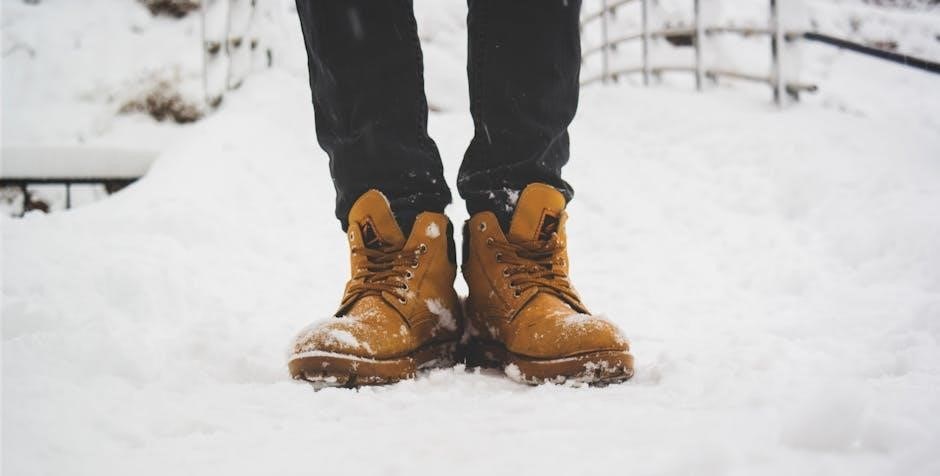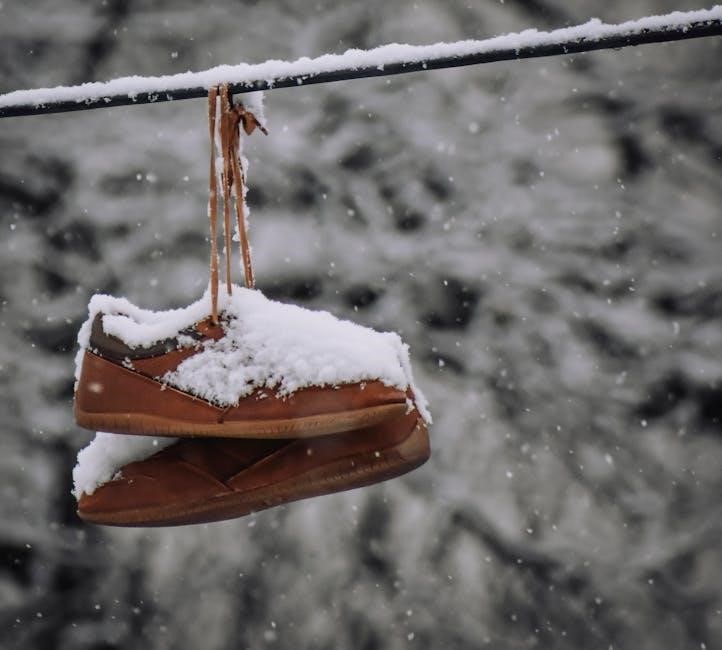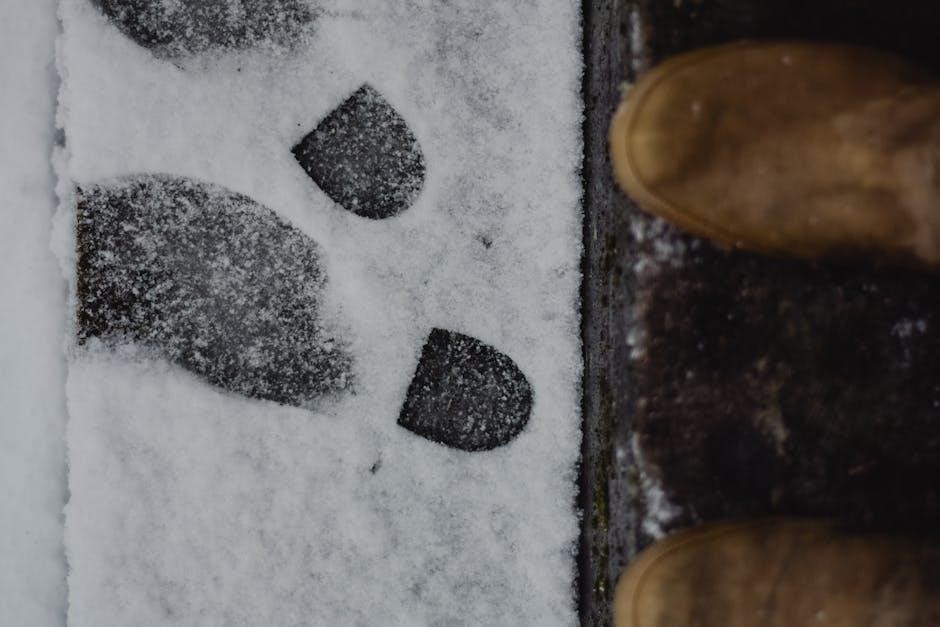
snow shoe size guide
Understanding snow shoe size is crucial for effective snowshoeing, with proper sizing affecting performance and comfort, using online resources and guides to determine correct size is essential always.
Understanding the Importance of Proper Sizing
Proper sizing is essential for a comfortable and enjoyable snowshoeing experience, as it affects the overall performance and stability of the snowshoes. A correct fit ensures that the snowshoes provide adequate flotation and traction, allowing for efficient movement through the snow. Incorrect sizing can lead to decreased mobility and increased fatigue, making it more difficult to navigate through challenging terrain. Furthermore, proper sizing also plays a crucial role in preventing injuries, as ill-fitting snowshoes can cause strain on the legs and back. By understanding the importance of proper sizing, individuals can take the necessary steps to ensure a safe and enjoyable snowshoeing experience, and make the most of their time in the snow. This knowledge is vital for snowshoers of all levels, from beginners to experienced enthusiasts, and is a key component of the snow shoe size guide.

Factors Affecting Snow Shoe Size
Weight and equipment considerations are key factors affecting snow shoe size always.
Weight and Equipment Considerations
When determining the correct snow shoe size, it is essential to consider the weight of the user and their equipment. This includes the weight of the user’s body, as well as any additional weight from clothing, backpacks, and other gear. According to online resources, most size charts recommend including the weight of equipment when selecting a snow shoe size. For example, if a user weighs 195 pounds, they should look for snow shoes that can handle at least 220-250 pounds. This ensures that the snow shoes can provide adequate support and flotation in various snow conditions. By taking into account the weight and equipment considerations, users can choose the right snow shoe size for their needs and enjoy a safe and comfortable snowshoeing experience. Proper sizing is crucial for effective snowshoeing and user safety.

Snow Shoe Size Charts
Utilizing online snow shoe size charts helps determine correct size always, providing guidance for users to make informed decisions quickly and easily every time.
Using Charts to Determine the Right Size
To determine the right snow shoe size, users can refer to online charts that provide guidance based on weight and activity level, making it easier to select the correct size. These charts typically include a range of weights and corresponding snow shoe sizes, allowing users to make an informed decision. By using these charts, individuals can ensure a proper fit and optimal performance. Additionally, considering factors such as terrain and snow conditions can help refine the selection process. Online resources often provide detailed information and sizing guides to help users make the best choice. By following these guidelines, individuals can confidently select the right snow shoe size and enjoy a safe and enjoyable snowshoeing experience. Proper sizing is essential for comfort and performance, and using charts can help achieve this goal.

Types of Snow Shoes and Terrain
Different snow shoes suit various terrains, including flat, hilly, and mountainous areas, with specific features for each type always.
Choosing the Right Snow Shoe for Deep Snow or Varied Terrain
To choose the right snow shoe, consider the terrain and snow conditions, as different shoes are designed for specific environments, with longer shoes suitable for deep snow and shorter shoes for varied terrain.
The type of snow shoe that is chosen will depend on the individual’s needs and preferences, with some shoes featuring round tails for deep snow and V-Tails for easier walking.
Additionally, the weight and size of the user, as well as the weight of any equipment or packs, should be taken into account when selecting a snow shoe, to ensure proper floatation and maneuverability.
By considering these factors, individuals can choose the right snow shoe for their needs, whether it’s for deep snow or varied terrain, and enjoy a safe and enjoyable snowshoeing experience, with the right equipment and knowledge.
Additional Considerations for Snow Shoe Sizing
Clothing and pack weight affect snow shoe sizing, consider these factors for proper fit and comfort always.
Accounting for Clothing, Pack Weight, and Boot Type
To ensure a proper fit, it is essential to consider the weight and type of clothing, pack, and boots you will be wearing while snowshoeing. This includes the weight of your jacket, pants, and any other gear you will be carrying. The type of boot you wear can also affect the fit of your snowshoes, with some boots being bulkier than others. Additionally, the weight of your pack can impact the overall weight you will be applying to the snowshoes, which can affect their performance. By taking these factors into account, you can choose the right size snowshoes for your needs and ensure a comfortable and enjoyable snowshoeing experience. Using online resources and guides can help you determine the correct size and make informed decisions. Proper sizing is crucial for effective snowshoeing.

and Final Tips
Related Posts
the extra academy survival guide
Navigating the extra academy jungle? This survival guide is your secret weapon! Conquer classes, make friends, and thrive. Your extra academy journey starts here!
retribution paladin leveling guide wotlk
Tired of slow leveling? Our Retribution Paladin guide for WotLK will have you smashing faces and reaching 80 in no time! Gear, tips, and tricks inside.

amellwind’s guide to monster hunting
Learn monster hunting with Amellwind’s expert guide and tips at Fihimafihi